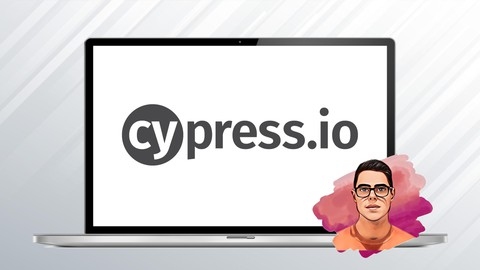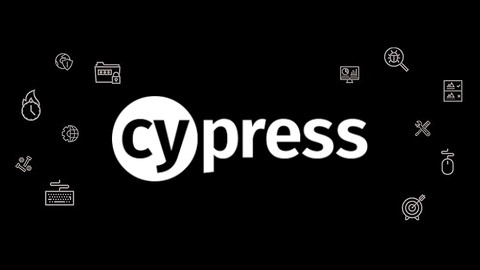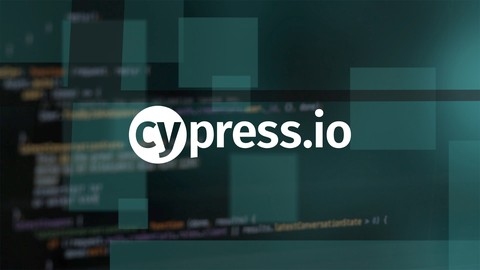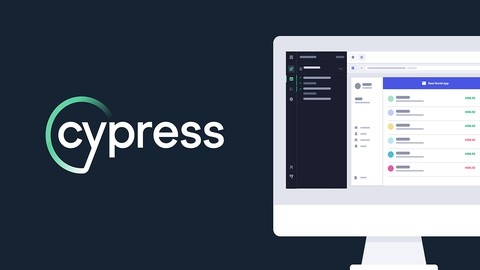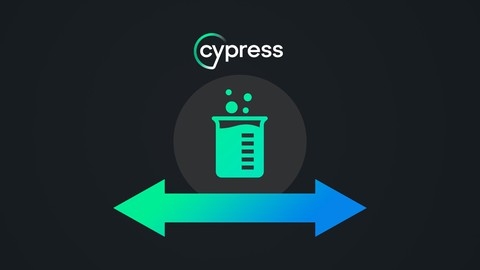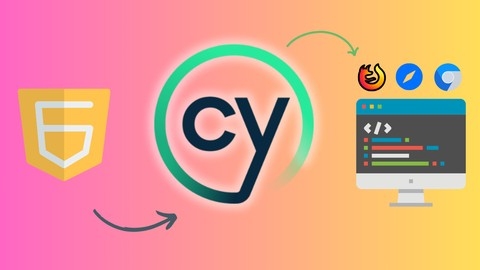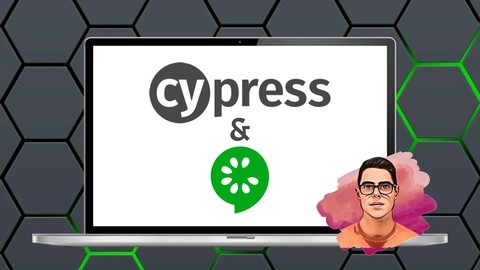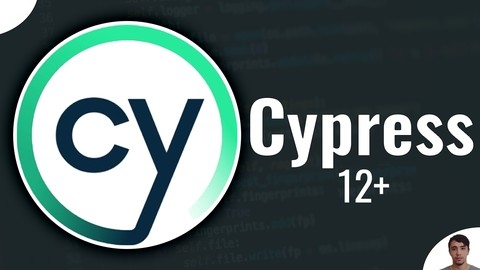Cypress is a modern JavaScript-based end-to-end testing framework that simplifies and speeds up the process of automating web application testing.
Cypress offers a user-friendly interface and a powerful set of features that make it easy to write and run tests, and it integrates seamlessly with popular development tools.
Mastering Cypress can significantly improve your web development workflow by enabling you to write comprehensive tests, detect bugs early, and deliver high-quality applications.
Finding the right Cypress course on Udemy can be a challenge, given the vast number of options available.
You’re looking for a course that goes beyond the basics, providing practical experience and hands-on projects to solidify your understanding of the framework.
You also want a course that’s taught by experienced professionals who can guide you through real-world testing scenarios.
We’ve thoroughly reviewed numerous Udemy courses and, based on our analysis, Cypress - Modern Automation Testing from Scratch + Frameworks is the best course on Udemy overall.
This course stands out for its comprehensive coverage, starting from the absolute basics and guiding you through advanced concepts like building custom frameworks.
It includes numerous practical examples, hands-on exercises, and real-world projects, providing you with the skills and confidence to automate your web application testing with Cypress effectively.
While this is our top pick, we understand that everyone has different learning preferences and needs.
Keep reading to explore other excellent Cypress courses on Udemy, tailored to specific learning styles and career goals.
We’ve compiled a list of recommendations for beginners, advanced learners, and those looking for courses focused on particular testing methodologies, so you can find the perfect fit for your journey.
Cypress -Modern Automation Testing from Scratch + Frameworks
The course starts by introducing you to Cypress, a modern JavaScript-based end-to-end testing framework, and its advantages over traditional automation tools.
You’ll learn how to install Cypress and set up projects for Windows and MAC environments.
The course covers the fundamentals of JavaScript, which is essential for writing Cypress tests.
You’ll dive into the Cypress Test Runner, exploring its features and learning how to build and run basic tests.
As you progress, you’ll master Cypress locator strategies, assertions, handling asynchronous code, and working with web controls like checkboxes and dropdowns.
The course also teaches you to automate alerts, popups, frames, child windows, and calendars using Cypress and jQuery commands.
The course dedicates several chapters to building a robust Cypress framework, covering topics like fixtures, custom commands, page object design, test parameterization, configuration properties, and environmental variables.
You’ll learn to integrate Cypress with tools like Jenkins for continuous integration and generate reports using Cucumber BDD.
Additionally, you’ll explore mocking HTTP requests and responses, handling session tokens and local storage data, parsing CSV files, and integrating with databases for end-to-end testing.
The course even covers tasks for Node execution, reading and manipulating Excel files, and handling file uploads and downloads within Cypress.
Throughout the course, you’ll work on practical examples and exercises to reinforce your learning.
Quizzes are included to assess your understanding of the concepts covered.
The course provides code downloads and reference materials to support your learning journey.
Cypress: Web Automation Testing from Zero to Hero
The course covers everything you need to become proficient in web automation testing using Cypress.
You’ll start with an introduction comparing Cypress to Selenium, highlighting the key differences and the pros and cons of each tool.
This will help you understand why Cypress is gaining popularity in the test automation space.
Before diving into Cypress, the course provides a solid foundation in JavaScript fundamentals.
You’ll learn about variables, data types, objects, arrays, operators, conditional statements, loops, and functions.
Even if you’re new to programming, this section will equip you with the necessary JavaScript skills to write Cypress tests effectively.
Once you have the JavaScript basics covered, the course guides you through installing Cypress, cloning the application under test, and configuring the initial setup.
You’ll then learn about interacting with web elements using various locators and techniques, such as finding elements, extracting text values, handling checkboxes and radio buttons, working with date pickers, lists, dropdowns, tables, pop-ups, and tooltips.
The course also covers writing assertions using Chai BDD, TDD, and jQuery.
One of the key concepts covered is the Page Object Design Pattern, which helps organize your tests and make them more maintainable.
You’ll learn how to create page objects, refactor your code to use them, and implement custom commands for reusable functionality.
The course also dives into working with APIs, teaching you how to verify browser API calls, mock API responses, make API calls from Cypress, and handle headless authorization.
In the advanced features section, you’ll explore topics like writing NPM scripts, working with environment variables, configuring test retries, generating multiple test reports (JUnit XML and Mochawesome HTML), running Cypress in a Docker container, handling OKTA authentication, cross-browser testing, accessing Shadow DOM elements, and using the Cypress Dashboard for parallelization and reporting.
The course even covers visual testing using open-source plugins and the Percy.io service, ensuring you have a comprehensive understanding of testing web applications.
Throughout the course, you’ll gain hands-on experience by working with real-world examples and applications under test.
The lectures are structured in a way that takes you on a natural journey, gradually building your skills and knowledge.
The Complete Cypress v12 Course- Automation Testing Bootcamp
This comprehensive course offers a deep dive into Cypress, a powerful tool for automating web application testing.
You’ll start with the fundamentals, gaining a clear understanding of what Cypress is, its advantages, and how it works.
The course then expertly guides you through the setup process, ensuring you have the right tools in place for success.
From there, you’ll learn to write your first Cypress tests, mastering core concepts like commands, selectors, and assertions.
The course uses real-world examples to demonstrate how to effectively utilize Mocha for test organization and Chai for crafting robust assertions.
As you progress, you’ll explore advanced topics like asynchronous programming, variables, and iteration, understanding the intricacies of Cypress’s asynchronous nature.
The course clearly explains how to work with promises and the ’then’ command, equipping you with the tools to handle asynchronous tasks effectively.
You’ll also learn to tackle Cypress’s limitations head-on.
The course covers a range of common challenges, including working with child windows, browser navigation, alerts, iframes, checkboxes, radio buttons, and dropdown lists.
It even provides solutions for handling data from tables and working with date pickers.
The curriculum doesn’t stop at the basics.
You’ll dive into more complex topics like hooks, fixtures, and custom commands, enabling you to streamline your testing process and build a more efficient testing framework.
The course also equips you with the knowledge to work effectively with environment variables, page object modeling, and timeouts, ensuring your tests are robust and reliable.
You’ll learn how to debug your tests efficiently, take screenshots and videos for documentation, and manage cookies and local storage.
Beyond these fundamentals, you’ll explore advanced tools like the Cypress Dashboard, NPM scripts, and reporting.
Learn to generate JUnit and Mochawesome reports for detailed analysis and leverage the power of Cypress’s dashboard.
The course prepares you for real-world scenarios with its comprehensive coverage of cross-browser testing, showing you how to ensure your application functions flawlessly across various platforms.
It even delves into continuous integration with Jenkins, guiding you through setting up and configuring a pipeline to automate your testing workflow.
Finally, you’ll explore API and XHR testing, allowing you to assess your application’s backend functionality.
You’ll gain experience with tools like Postman and JSON Server, mastering the art of making API requests and validating responses.
This course provides a comprehensive and practical approach to Cypress automation testing.
It covers a wide range of concepts, from the basics to advanced techniques, ensuring you have the skills to effectively automate your testing process and build high-quality web applications.
Automated Software Testing with Cypress
You’ll start by setting up your development environment and diving into the fundamental concepts of Cypress testing, including assertions, waiting mechanisms, and test hooks.
As you progress through the course, you’ll build upon this foundation, tackling advanced techniques like working with forms, inputs, buttons, and modals.
You’ll learn to handle dynamic content, upload files, and even test your applications across different devices and viewports.
The course also explores Cypress fixtures for efficient data management and delves into custom commands to streamline your testing process.
But the learning doesn’t stop there.
You’ll go beyond basic Cypress skills to master end-to-end (E2E) testing for common scenarios like login, product details, and UI smoke tests.
The course offers a dedicated section on REST API testing with Cypress, allowing you to validate headers, explore request/response objects, and handle authentication tokens.
And for those familiar with Behavior-Driven Development (BDD), there’s a section dedicated to integrating Cucumber with Cypress, enabling you to write more readable and maintainable tests.
To further enhance your Cypress skills, the course delves into building robust test frameworks using TypeScript.
You’ll explore design patterns like App Actions and Page Objects, which help you organize tests and improve code reusability.
You’ll also learn best practices for setting up your Cypress project, including linting, prettier, and connecting your project to the Cypress Dashboard.
The course concludes with an in-depth exploration of Visual Regression Testing, showcasing how to utilize tools like Cypress Image Snapshot and Percy to detect unwanted changes in your application’s UI.
You’ll also gain a solid understanding of Continuous Integration and Continuous Deployment (CI/CD) and learn how to run your Cypress tests within a Jenkins pipeline.
This course provides a well-structured path to mastering Cypress, covering a wide range of topics and equipping you with the skills and knowledge to confidently build reliable and efficient automated testing solutions.
Cypress End-to-End Testing - Getting Started
This comprehensive course is your guide to mastering Cypress.
You’ll dive right into setting up your development environment with VS Code and learn to structure your first Cypress tests.
The course then takes you through realistic scenarios, teaching you to simulate user interactions such as typing, clicking, and navigating web pages.
You’ll delve into a wide range of topics, including element selection, writing assertions, managing timeouts, and understanding the fundamentals of Cypress Studio.
This visual tool helps you analyze your tests in detail.
You’ll gain hands-on experience with Cypress Studio, learning to take screenshots and videos of your tests for comprehensive analysis.
The curriculum goes beyond the basics, covering advanced concepts like stubs, spies, fixtures, and clock manipulation.
These techniques are crucial for managing external dependencies and ensuring your tests are reliable.
You’ll learn to interact with HTTP requests, databases, and authentication flows, essential skills for testing real-world applications.
The course is packed with practical examples and exercises, allowing you to apply your knowledge immediately.
You’ll learn to create custom commands and queries, streamlining your tests and reducing redundancy.
End to End automation testing with Cypress
You’ll start with the fundamentals, setting up your environment and writing your first tests.
But the real value lies in its exploration of advanced features.
You’ll learn to harness Cypress’s unique “retry-ability” for handling dynamic web applications, a critical skill for modern UI testing.
The course delves into data-driven testing, allowing you to create robust tests with varying inputs, and equips you with the knowledge to perform API testing, essential for verifying backend interactions.
You’ll also discover how to integrate Cypress with other tools like Docker and GitHub Actions, building a complete CI/CD pipeline for your projects.
This course doesn’t stop at basic automation; it prepares you for complex scenarios.
You’ll delve into visual testing with Percy, learn to work with iFrames, and explore multi-domain automation for applications requiring OAuth authentication.
The course even introduces you to component testing, a powerful approach for testing individual components in isolation.
Cypress with Cucumber BDD - Automation Testing Bootcamp
This comprehensive course equips you with the skills to master Cypress and Cucumber BDD for robust automation testing.
You’ll embark on a journey that begins with a solid understanding of these tools, delving into their functionalities and benefits.
The course seamlessly guides you through setting up your environment, providing detailed instructions for essential tools like NodeJS, Visual Studio Code, Git Bash, and more.
Think of it as building your own testing lab, one step at a time.
Next, you’ll learn the art of creating and structuring your test projects using Cucumber’s Gherkin language.
This is where the real fun begins—you’ll write actual tests using both positive and negative scenarios, mastering the implementation of step definitions and their mapping to Gherkin features.
The course dives deep into advanced techniques like Cucumber expressions, background keywords, and scenario outlines, allowing you to craft more complex and reusable tests.
You’ll discover how to organize your tests effectively using tags and custom scripts, creating a structured and efficient testing process.
Furthermore, you’ll learn to generate insightful reports, including HTML and JSON formats, and even attach screenshots for in-depth analysis.
Finally, the course explores how to seamlessly integrate Cypress and Cucumber into Continuous Integration (CI) systems like Jenkins, enabling you to automate your testing process and ensure consistent quality throughout your development cycle.
The Complete Cypress 13+ Course: From Zero to Expert!
This course offers a comprehensive and practical introduction to Cypress.
You’ll dive right into the fundamentals, starting with installation and basic concepts, then quickly move on to hands-on testing scenarios.
The course emphasizes the importance of core testing frameworks like Mocha JS and Typescript, which are essential for building robust Cypress tests.
You’ll gain valuable experience writing tests using describe, it, and hooks like beforeEach and afterEach.
You’ll also learn about subject management, navigating websites with cy.visit, and working with locators using cy.get, mastering CSS and XPath selectors for targeting specific webpage elements.
As you progress, you’ll tackle real-world challenges like automatic waits, click and hover interactions, and dynamic table scenarios.
The course covers important aspects like managing environment variables, configuring viewports, and handling complex challenges like checkboxes and input fields.
You’ll explore advanced features like double-clicking, right-clicking, and handling links.
The course also delves into managing broken images, uploading and downloading files, and navigating iframes.
You’ll learn to work with alerts, date pickers, tooltips, and drag-and-drop interactions, and explore Cypress sessions for managing user logins efficiently.
With a solid foundation, you’ll dive into advanced topics like the Page Object Model (POM), creating custom commands, and implementing global Mocha hooks.
The course covers using fixtures for data management and provides insights into Cypress Run, helping you generate comprehensive reports using tools like Mochawesome.
You’ll learn about API testing using Cypress, allowing you to test the functionality of APIs in your application.
You’ll explore REST APIs, common API requests like GET, POST, PUT, and DELETE, and learn how to handle authentication tokens.
The course wraps up with a focus on integrating the Cypress dashboard and continuous integration/continuous deployment (CI/CD) using Github Actions.
You’ll learn how to run tests in parallel and gain valuable insights into managing secrets and passwords securely.
For those interested in BDD (Behavior-Driven Development), the course offers an overview of Cucumber integration.
You’ll learn how to structure a project, write step definitions, and effectively utilize tags for test organization.
This course provides a strong foundation in Cypress, preparing you for a wide range of testing scenarios.
